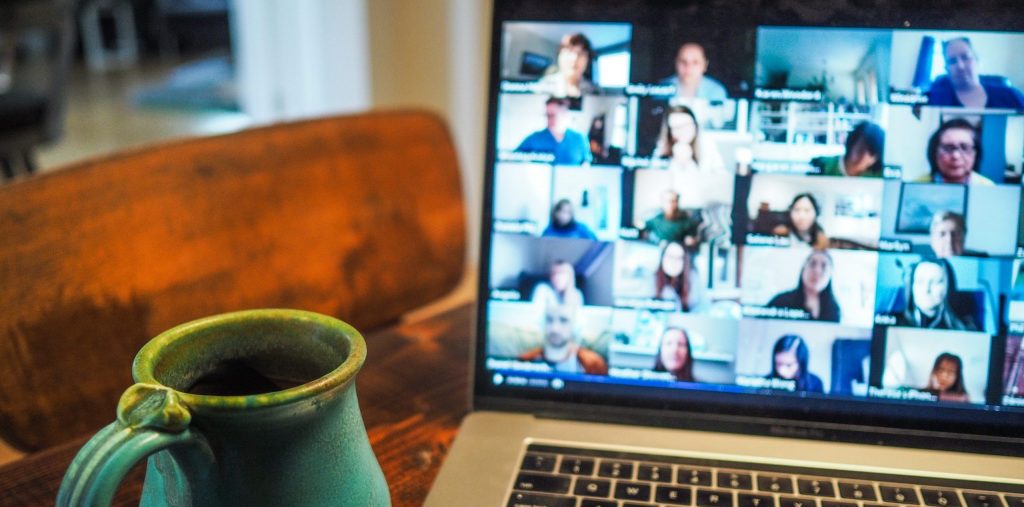NASA is not going back to traditional working. Although many employees are returning to the office, the agency is embracing the concept of a hybrid workforce, giving people increased flexibility in choosing where to work, depending on the nature of their responsibilities.
As the agency’s Chief Resilience Officer, Melanie Saunders travels to NASA’s centers nationwide to help them learn how to work effectively in this new environment. The transition to hybrid work is also part of NASA’s Future of Work program, which Saunders oversees.
One of the basic challenges of hybrid work is running hybrid meetings. Here are some best practices that Saunders shared for making hybrid meetings effective.
1 – Keep the Tech Simple
When looking for hybrid meeting technology, it’s easy to get dazzled by the high-end, custom solutions that guarantee a great experience. But that’s not necessarily the best investment.
Saunders recommends looking for solutions that are cost-effective and portable but not a “forever fix,” while keeping an eye on new and emerging solutions.
“You don’t want to spend $200,000 on a conference room upgrade when what you need is a $1,000 soundbar and have everybody use their laptop for the camera, chat and other functions,” she said.
NASA has adopted Microsoft Teams meeting software, which everyone in a meeting uses, whether they’re in person or remote, and the agency is outfitting physical meeting rooms with quality but affordable sound systems.
2 – Cultivate Hybrid Know-How
By now, most people know how to function in virtual meetings, aside from occasionally forgetting to unmute themselves. But hybrid meetings are just different enough to trip people up.
For example, if you have a central sound system in the room, people there need to turn off laptop’s speakers to prevent an echo.
“I cannot tell you how many times we’ve had a hybrid meeting where there’s the echo,” Saunders said. “And it’s because people have been working in their rooms, so they’re not used to being in a room with a sound system and other users.”
To smooth the transition to hybrid, NASA has increased training on the basics of running hybrid meetings, including buying the right technology, running sound and facilitating discussions. They have put together one-page how-to’s, created short videos and held brown-bag sessions at the different centers.
3 – Focus on Inclusion
Before large-scale remote work, most teleworkers who joined meetings via phone or videoconferencing felt, well, remote. They often couldn’t tell who was talking and struggled to join the conversation. Meetings clearly were geared toward in-person attendees.
Virtual meetings provided a greater sense of inclusion, with everyone having the same opportunities and the same tools to participate. As NASA shifts toward hybrid meetings, the agency doesn’t want to lose that.
In part, that means requiring everyone to follow virtual meeting practices: keeping their cameras on, including an identifying label with their name and organization, using the software’s “raise hand” function to ask to speak, contributing in the chat box, and so on.
“If everybody uses their own computer and everybody has to raise their hands, then you really level the playing field, where people online feel like, ‘OK, I’ve got an equal say,’” Saunders said.
To make it work, she said, meeting facilitators must model good behavior — for example, by reminding people to raise their virtual hands if they forget and using the chat function themselves.
4 – Build Equity
An advantage of remote work is that it makes it easier for some participants to share their ideas or perspectives.
In traditional venues, certain voices tend to be heard above others — those of men, Type A personalities and extroverts. The virtual or hybrid meeting changes those dynamics. People who might not feel comfortable stepping onto the stage might feel better about speaking on camera or at least putting a comment in chat.
It’s not just the employee who benefits from having their voice heard, Saunders said.
“One of the lessons of both the Challenger and Columbia [space shuttle] accidents was the need to make sure that all voices are being heard, that we’re getting all the information on the table,” she said.
This article is an excerpt from GovLoop’s guide “Solving Your Hybrid Workforce Problems.”

